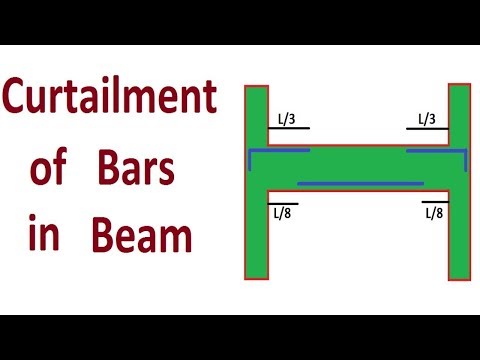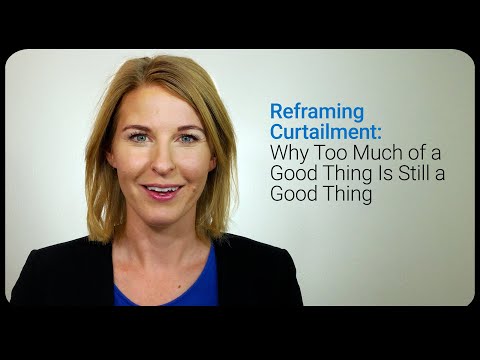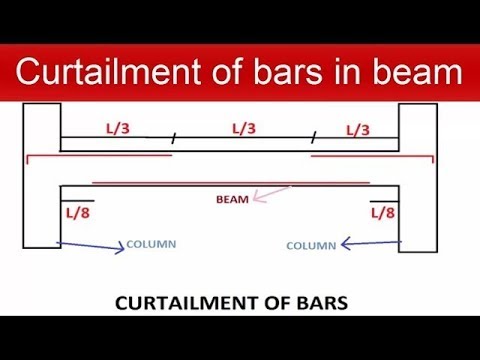The Power of Curtailment: A Path to Mortgage Freedom
What if there was a magic wand that could shorten the life of your mortgage and save you heaps of cash in interest? No, it’s not a fairy tale—it’s the power of mortgage curtailment. In plain English, curtailment is that secret sauce that can turn a 30-year mortgage into a 20-year victory dance. So, let’s roll up our sleeves and get the lowdown on this financial game-changer.
Ever hear the adage, “A penny saved is a penny earned”? Well, in the world of mortgages, a dollar paid early is a bunch of dollars saved later. Curtailment is just that—paying down your mortgage faster than scheduled and slicing through the interest like a hot knife through butter. Whether it’s a partial or full curtailment, every dollar put toward the principal is a step closer to waving goodbye to your mortgage.
So, what’s the catch? There isn’t one, really. Curtailment simply means you’re getting ahead of the game, making your loan sweat a little and pay off big time in the long run. Now, let’s see how it affects your mortgage interest and amortization.

Principal Curtailment Demystified
We all know that sinking feeling of watching money disappear into the abyss known as interest. Enter principal curtailment—your white knight to combat this foe. With every extra buck you throw at your principal, the interest on your next payment says, “Oops! I shrink a bit.” And shrink it does, because that’s less balance for the interest monster to munch on.
But don’t just take my word for it. Data and expert opinions are singing the same tune: Principal curtailment is like financial magic. It’s not hocus-pocus either; it’s math. Pay more now, pay less later. The numbers don’t lie—and they could mean a beach vacation with those interest savings, or even starting a college fund for little Timmy.

| Aspect | Details |
| Basic Definition | Reduction of the outstanding principal balance of a mortgage by paying more than the scheduled principal amount due. |
| Types of Curtailment | Partial Curtailment – Extra payments towards the principal. Full Curtailment – Payment of the entire outstanding balance. |
| Benefits | – Saves on interest over the life of the loan. – Potentially shortens the loan term. – Builds equity faster in the property. |
| How to Curtail | – Make additional payments separately or with regular monthly instalments. – Pay a lump sum towards principal. |
| When to Curtail | – When you have extra funds. – After evaluating other debts and investments for better returns. |
| Considerations | – Check for prepayment penalties. |
| – Assess impact on liquidity and emergency funds. | |
| – Understand tax implications, if any. | |
| Result of Partial | – Reduces the principal balance. |
| Curtailment | – May not immediately lower monthly payments but reduces the number of future payments. |
| Result of Full | – Clears the debt on the property. |
| Curtailment | – Eliminates future interest payments. |
| Energy Sector | Not directly relevant to mortgage curtailment. |
| Relevance to Energy | Different concept – relates to adjustment of power generation or consumption in response to supply and demand conditions. |
Analyzing Your Mortgage Structure for Curtailment Opportunities
If your mortgage was a cookie, curtailment would be the chocolate chips—making it even better. But not all cookies—or mortgages—are made the same. You’ve got your fixed-rate and adjustable-rate ones, each with its own quirks. To maximize your curtailment strategy, you need to understand which one you’ve got and how friendly it is to extra payments.
Picture this: Sarah has a fixed-rate mortgage, John has an adjustable one, and both have a couple of grand to spare. Sarah’s extra payment locks in savings for the rest of her loan term, while John’s benefit changes with his fluctuating rate. Knowing their mortgage structures helps them strategize their curtailment sweet spots.

Crafting Your Own Curtailment Plan
Alright folks, it’s time to put pen to paper—or fingers to keyboard—and design your own money-saving, interest-slashing curtailment schedule. Think of it like a fitness plan but for your wallet. To start:
And don’t forget, there are financial planning tools out there that can help. Think of them as your personal financial trainers, keeping you on track to the finish line.

Lump-Sum Curtailments: Timing and Tactics
Ah, the unexpected windfall—like that bonus at work or Aunt Mildred remembering you in her will. Instead of blowing it on the latest gadget, why not make a serious dent in your mortgage? Lump-sum curtailments can slice years off your mortgage life and could very well be the best one-night stand your money has ever had.
But timing is everything. Doing it early in the loan cycle means less interest expense, because just like that trusty old compound interest, curtailment works best when it’s got time to flex its muscles.

Incremental Curtailment Strategies for Consistent Savings
Now let’s talk about the slow and steady route. Incremental curtailments are like squirreling away nuts for winter—little by little, they add up. Here’s the plan:
The best part? It’s like a snowball rolling downhill—the more you do it, the bigger the benefits!
Utilizing Windfalls and Refinancing for Maximum Curtailment
Imagine catching a big fish, like a sizable tax refund or a juicy bonus. That’s your chance to make a splash with your mortgage. But let’s not forget about refinancing—a beacon of hope in a sea of interest rates—especially if rates have taken a dive since your original loan.
Merging a refinance with curtailment can be a double whammy in a good way. Lower interest rates plus extra payments equal a mortgage melting away faster than ice cream on a hot sidewalk.
The Tax Implications of Mortgage Curtailment
Let’s talk taxes, because Uncle Sam always wants a piece of the action. On the bright side, mortgage interest is often tax-deductible, but with curtailment, you’re paying less interest over time. Sounds like a good problem to have, right?
But hold your horses—before you make any move, consult with a savvy tax pro. They can navigate through the tax implications and spell out how curtailment could affect your deductions. Remember, what’s good for your wallet now should also be good for it come tax season.
Navigating Potential Pitfalls in Mortgage Curtailment
Nobody likes to talk about pitfalls, but they’re as real as the boogeyman. The chief among them? Prepayment penalties, which can bite you if your lender’s not on board with your curtailment enthusiasm.
So, read the fine print, talk to your lender, and make sure you’re not accidentally stepping into a money trap. After all, dodging these pitfalls is what separates the financial wizards from the mere muggles.
Future-Proofing Your Estate: Curtailment as a Long-Term Strategy
Thinking long-term isn’t just about where you’ll retire or what color your hovercar will be—it’s about leaving a shiny, debt-free estate behind. Curtailment isn’t just about now; it’s about then. It means ensuring Junior’s inheritance isn’t a house with a mortgage but a home free and clear.
By incorporating curtailment, you’re not just managing your mortgage, you’re crafting a legacy. It’s a cornerstone of a forward-thinking financial plan that says, “Hey, I’ve got this.”
Your Blueprint for Mortgage Liberation
We’ve danced around the golden pot of mortgage tips and pulled out the most glittering coins. Now it’s your turn to put these curtailment strategies into action and create a blueprint that’ll make your mortgage lender’s head spin—in a good way.
Remember:
Curtailment isn’t just a fancy financial term—it’s your way to mortgage liberation. Grab that curtailment cape, and let’s get to financial heroics. Remember, as Mortgage Rater, we’re here to guide you, providing insights as warm as sunshine and advice as solid as the foundation of your home sweet home.
Mortgage Curtailment: Your Ticket to Savings!
Ever found yourself wondering how you can cut down on those mortgage payments? Well, sit tight! We’re about to dive into the world of curtailment strategies, and trust me, it’s not as snooze-worthy as it sounds. You might just stumble upon a golden nugget that’ll save you a boatload in the long run!
What the Heck Is Curtailment, Anyway?
Alright, you’ve nailed down “The inspection” on your new dream home, and the paperwork is sprawling across the table like a buffet. In the mix, you’ve probably glossed over this term: curtailment. Simply put, curtailment is the act of making extra payments to slash down the principal of your mortgage rather than just chipping away at the interest. It’s like hitting the gym for your finances – a little extra effort and the results are impressive!
Know Your Lien Holder, Know Your Power
Ever heard the phrase “knowledge is power”? Well, it applies to mortgages like “medium Boobs” fit into the perfect bra. Before venturing down the pay-it-off-early road, getting cozy with the “lien holder meaning” could save you from a world of misunderstanding. A lien holder, or the big cheese holding the deed to your property until you pay it off, has specific policies about how and when you can curtail your loan. Knowing these can mean the difference between smooth sailing and hitting the bureaucratic snags.
When Less Is More
Imagine it’s your mortgage’s “happy birthday meme” moment every time you make a curtailment payment. You’re essentially throwing a party for your financial future by shortening your loan term, reducing the total interest paid, and building equity faster than you can say “slice of cake!” And let’s face it, who wouldn’t want to reach that freeing moment of outright homeownership sooner?
Stay Legally Savvy
Let’s throw in a twist, shall we? Before you drop that chunk of cash onto your mortgage like a hot potato, get yourself covered with a “legal shield“. No, I’m not talking about knights and armor; I’m referring to understanding your mortgage’s terms and conditions like the back of your hand. Some lenders may have prepayment penalties (that’s the boogeyman for early payers), so you’ll want to be on the safe side before making that bold move.
The Final Verdict
Remember, folks, curtailment isn’t just a fancy finance word to toss around at parties; it’s a strategy that can save you serious dough. Whether you’re making lump-sum payments with your yearly bonus, throwing in a tad more each month, or finding cash in the couch cushions – every extra penny counts. And hey, wouldn’t you rather be sipping margaritas on the beach than signing off mortgage cheques into your golden years?
Transform those loan blues into a victory dance with some smarty-pants curtailment moves. After all, a little effort today can lead to a lot less debt tomorrow!

What does curtailment mean on a payment?
Ah, curtailment on a payment—sounds fancy, doesn’t it? In simple terms, it’s when you decide to go the extra mile and pay more than your regular mortgage amount. This extra dough goes straight towards reducing your loan’s principal balance, leading you down the fast track to shaking off that debt!
What does having a curtailment mean?
Having a curtailment means you’re throwing a bit more cash at your mortgage than the bank asked for. Think of it as an added bonus for your loan, like leaving a generous tip at your favorite diner; this extra cash helps you chip away at your loan balance faster than a woodpecker on a mission!
Are curtailment payments good?
Curtailment payments? Good? You bet they are! It’s like finding money in your winter coat—it speeds up your journey to being mortgage-free and may reduce the interest faster than you can say “Show me the money!” Just make sure you can still pay the piper (or the bills in this case) without stretching your budget too thin.
How does curtailment work?
How does curtailment work, you ask? Picture this: every time you make an extra payment, your mortgage shrinks a tad, like your waistline after a few weeks of skipping dessert. This not only reduces your total loan amount but your interest too, making your wallet feel a bit heavier in the long run.
What is curtailment limit?
Curtailment limit? That’s the cap on your generosity towards paying off that loan. It’s the lender saying, “We love your extra payments, but not too much, please!” Some lenders set a limit on how much extra you can pay to avoid losing their sweet, sweet interest earnings.
What is the difference between prepayment and curtailment?
The difference between prepayment and curtailment is not as tricky as a magic trick. Prepayment is like clearing the whole dinner table (your loan) in one fell swoop, while curtailment is more like nibbling away at your meal (loan balance) one bite at a time. Both lead to a clean plate, just at different speeds.
How do you account for curtailment?
Accounting for curtailment involves a bit of number wizardry. It’s when your accountant adjusts your books to recognize that you’ve been an overachiever and paid more than the minimum on your loan. It’s good news all around because it shows you’re taking a bite out of that debt pie faster than planned.
Can I work during curtailment period?
Can you work during the curtailment period? Well, as long as it’s not against your agreement and you’re not taking a breather from work due to the loan itself, roll up your sleeves and hustle! Extra money can mean more dough for curtailments, getting you to that mortgage burning party sooner.
What is the difference between a settlement and a curtailment?
A settlement is like finally crossing the finish line; you’ve paid off your loan in full, often with a lump sum. A curtailment, on the other hand, is more like sprinting a few extra laps; you’re paying extra to reduce your balance, but you haven’t quite crossed the finish line yet.
When should you not pay extra on a mortgage?
When should you not pay extra on a mortgage? Well, if your finances are tighter than a new pair of shoes or you’ve got other debts with interest rates that are soaring high like an eagle, it might be wise to hold onto that extra cash or tackle those pricier debts first.
What happens if you pay an extra 200 a month on your mortgage?
Wondering what happens if you pay an extra $200 a month on your mortgage? Well, strike up the band because you could be dancing your way out of debt years earlier and saving a bundle on interest. It’s like a turbo boost on the road to financial freedom!
Is it worth paying extra off your mortgage each month?
Is it worth paying extra off your mortgage each month? You betcha! It’s like investing in a piggy bank that grows thicker armor the more you contribute. Each extra payment fortifies your future against the dragons of debt and brings dreams of a mortgage-free life closer to reality.
What is the difference between a settlement and a curtailment?
Oops, looks like déjà vu! The difference between a settlement and a curtailment? We’ve already cracked that nut, but here goes: settlement finishes the loan game, curtailment just levels you up. Think final boss versus power-up!
What are curtailment losses?
Curtailment losses, that’s a bit of a misnomer—it’s not so much about losing as it’s about lenders losing. When you pay extra, lenders might miss out on some interest, like leaving a cake out in the rain. But for you, it’s more about winning the race against debt.
What is a principal curtailment payment on a car loan?
Lastly, a principal curtailment payment on a car loan? It’s like giving your car loan a shot of nitrous. You pay extra towards the principal, reducing the loan amount faster than a hot rod at a drag race. You end up owning that sweet ride outright a lot sooner than you thought!



